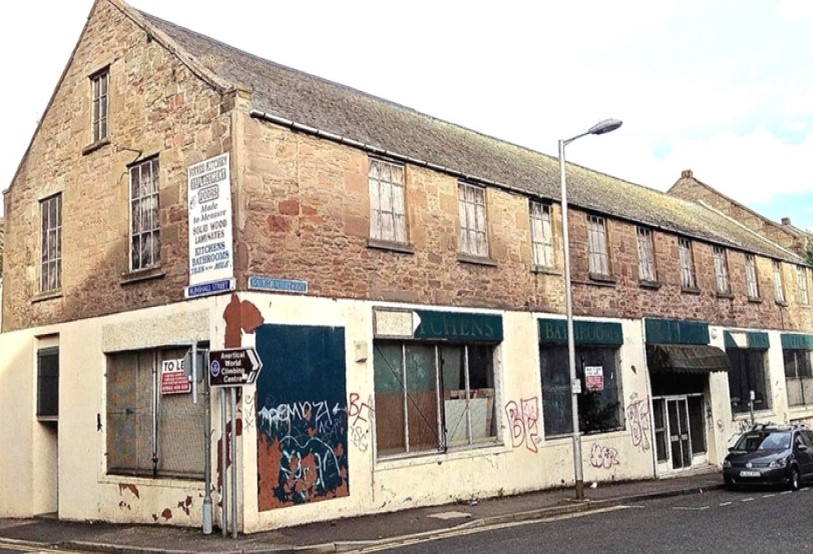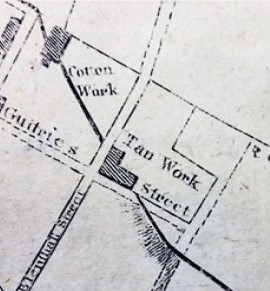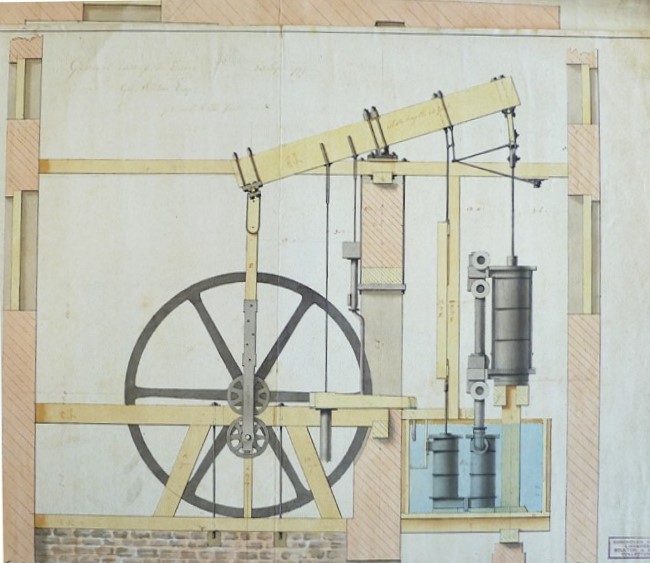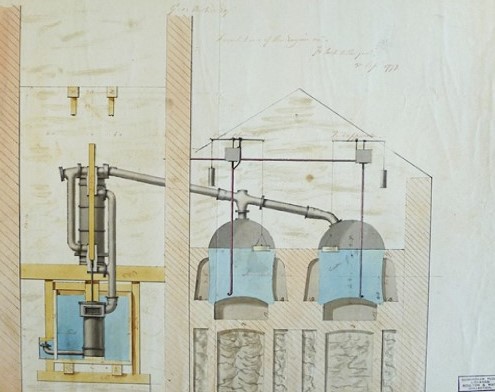Roger Illsley explores the history of Scotland’s first successful steam-powered flax mill, sadly now at risk
Big it is not. Beautiful it never was. But Dundee’s East Mill is the first successful steam-powered flax mill in Scotland and is also one of the oldest steam-driven mills in the world.

Originally built as a tannery in 1792, by 1799 it had already metamorphosed into a flax mill owned by George Wilkie, who turned to the technology of steam power and employed the Birmingham firm of Boulton & Watt to supply and install the 20 horse-power steam engine at a cost of £750. In a detail from the 1792 map of Dundee, the Scouring Burn can clearly be seen running under the tannery.

Importantly, the original technical drawings and specifications for the engine still exist, currently held in the Boulton & Watt Archive in the Library of Birmingham.
In 1809 Wilkie sold the works to J & W Brown for £11,500; it was then managed by William Brown, who left detailed memoirs of what he found and how he ran the mill. There are detailed descriptions of working practices, company finances, pay rates, and structural developments.

He appears to have had an enlightened attitude towards his workforce: schooling was provided for child workers, with a newspaper room for adults; machinery was securely boxed in; good ventilation was provided; there were seats in the spinning rooms and the foreman played the violin as he walked up and down the factory floor. It appears that sick relief was given and that jobs were kept open during illness.

Working conditions are also detailed: employees ‘enjoyed’ a 12.5 hour working day (14 hours in total): work commenced in the summer at 5.30 am and in the winter at 6.00am; workers could enjoy a ‘diet’ break of 45 minutes at 9.00am and 2.00pm; work ceased in the evening at 7.30pm in the summer and 8.00pm in the winter. The mill was to be kept clean, well-aired and healthy and whitewashed at least once a year. The machinery was always to be kept in the best possible state of repair.
Brown had long been aware of the problems created by the toilet facilities (Jakes) he had inherited at the mill. He notes that ‘the people in the upper flats had it in their power to play tricks on those below by wetting and dirtying them….’. By 1819 he had installed a Jakes that he describes with some pride and in no small detail. This feature is listed as still being in situ.
It also seems likely that the mill pond is also still there, underground, and still fed by the Scouring Burn. Watson recounts that ‘Down a metal manhole cover… lies the pond from the Scouring Burn… its neighbour is housed in East Mill… There, during development in the 1970’s, workmen found a flat-bottomed boat that had been tied up on the factory engine pond almost two centuries earlier.’
by Roger Illsley
Sources:
Early days in a Dundee Mill 1819-23, Dundee Abertay Historical Publication no. 20, 1980, William Brown ed. John Hume
Dundee – A Short History, Norman Watson, Black & White Publishing (2006 & 2017)
Town Council Minutes, Dundee City Archives
Many thanks to the Library of Birmingham for permission to reproduce the images from the Boulton & Watt Archive, ref MS 3147/5/187, and to Dr Rebecca Roach of Birmingham University for providing them.
Read the building's listing on Scotland's Buidings At Risk Register.
Find out about events in Scotland over National Mills Weekend.
